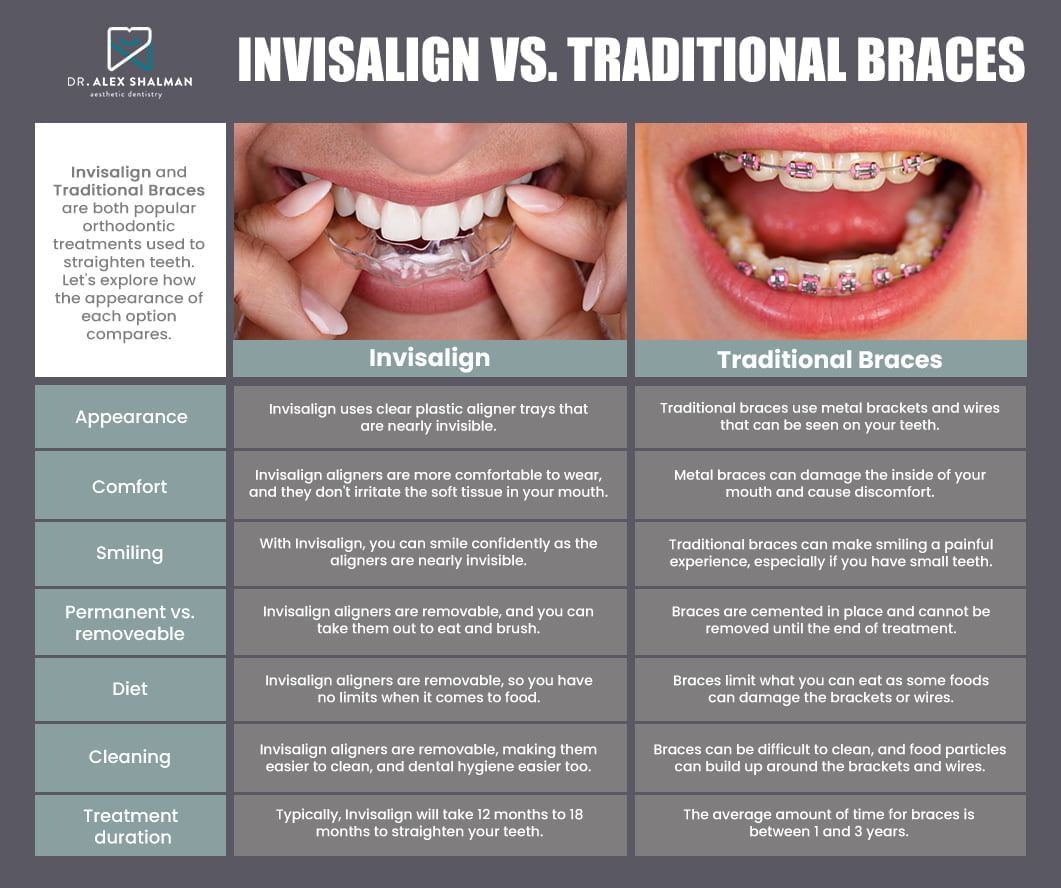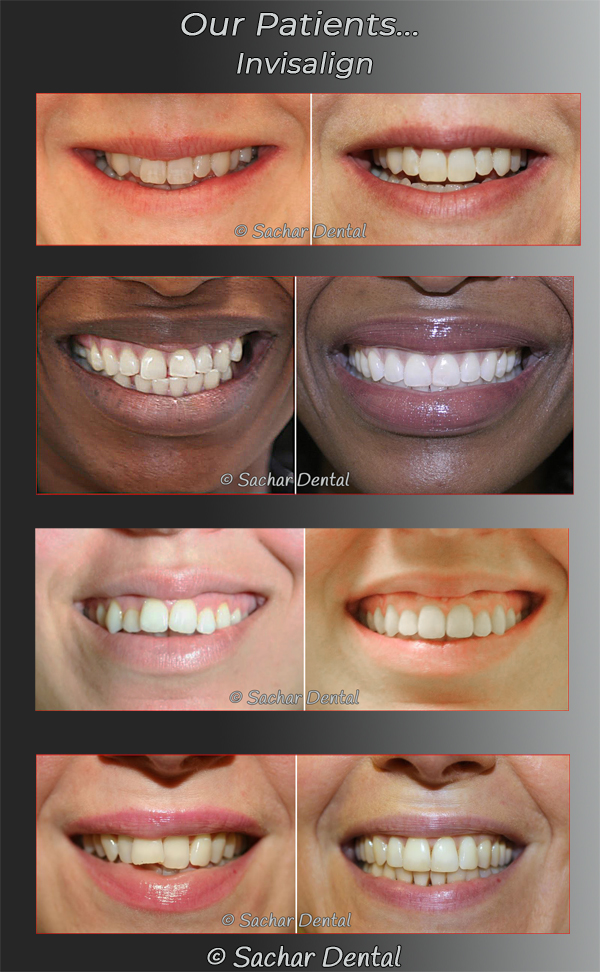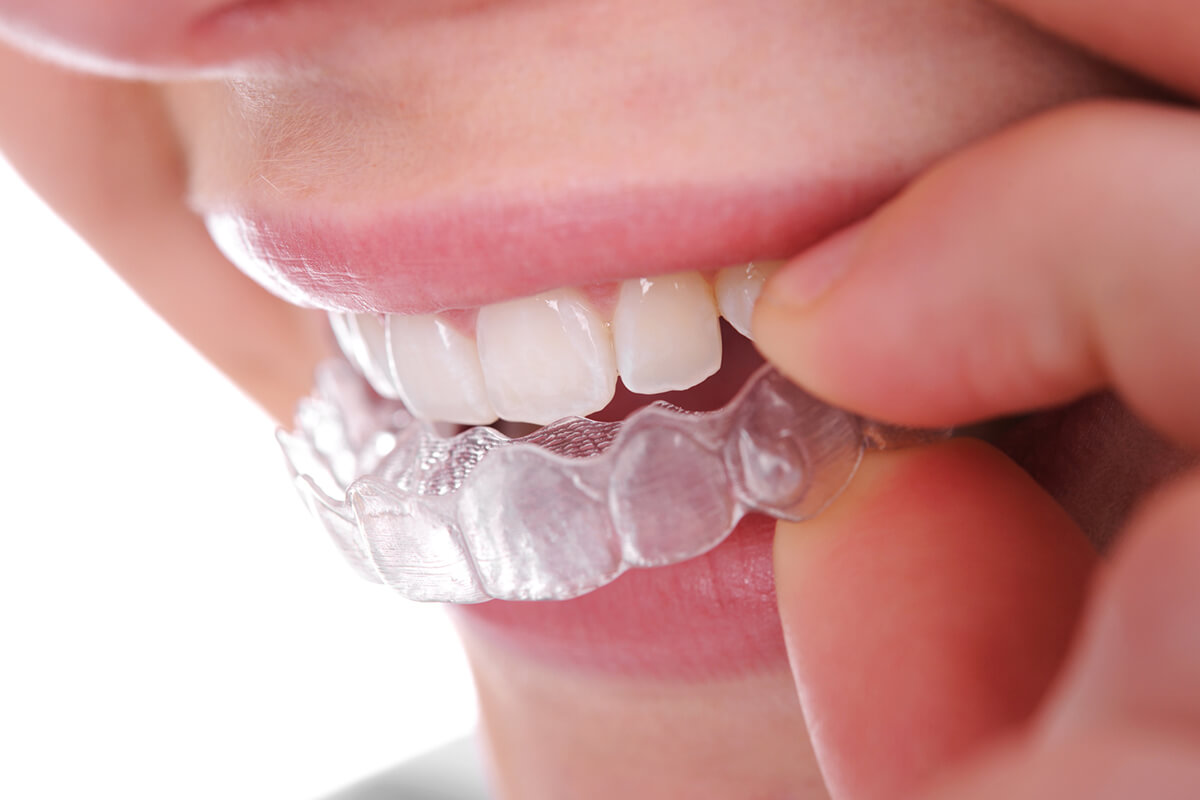Keeping Oral Health While Making Use Of Invisalign: Tips for a Smooth Experience
Keeping Oral Health While Making Use Of Invisalign: Tips for a Smooth Experience
Blog Article
Invisalign vs. Conventional Dental braces: Which Choice Is Right for You?
When considering orthodontic therapy, the option between Invisalign and typical braces offers a number of important variables that merit mindful examination. Invisalign offers a very discreet alternative with detachable aligners, while conventional dental braces offer an extra visible yet efficient service for extreme imbalance. Each option encompasses unique advantages and downsides connected to looks, convenience, treatment duration, and price. Understanding these subtleties is essential for making an informed choice that straightens with your personal preferences and way of living. The question stays: which alternative will best satisfy your orthodontic demands and assumptions?
Review of Therapy Alternatives

On the other hand, conventional dental braces are composed of metal braces and cords that are bonded to the teeth. This technique uses continuous pressure with time to achieve positioning. While efficient for intricate orthodontic issues, conventional dental braces call for normal check outs for changes and can pose challenges in preserving dental health as a result of the trouble of cleaning around brackets and wires.
Both choices have their qualities, and the selection frequently rests on certain oral problems, way of life choices, and individual conformity. Inevitably, consulting an orthodontic professional is essential for figuring out one of the most appropriate therapy plan tailored to individual needs. Understanding the nuances of each option can significantly influence the total success of orthodontic treatment.
Visual Considerations
A considerable element influencing the choice in between Invisalign and typical dental braces is the aesthetic appeal each therapy supplies. Invisalign aligners are crafted from clear plastic, making them essentially undetectable when used. This discreet look is especially appealing to adults and teens that might feel uneasy concerning their orthodontic therapy. The ability to maintain a natural smile throughout the alignment process can substantially improve the individual's self-confidence in specialist and social settings.
In contrast, typical braces contain metal braces and wires, which can be a lot more noticeable. While improvements in orthodontic technology have actually led to the advancement of smaller sized brackets and colored elastics, typical braces still preserve an even more obvious profile. For some individuals, the presence of dental braces may hinder them from looking for required therapy.
Inevitably, the choice between Invisalign and standard dental braces might hinge on personal preferences relating to looks. Patients who prioritize discretion commonly lean towards Invisalign, while those that are less concerned regarding presence may choose typical dental braces. Understanding the aesthetic implications of each option is important for making a notified decision that aligns with one's way of life and preferences.
Comfort and Convenience

In terms of benefit, Invisalign aligners are removable, allowing individuals to appreciate their favored foods without constraint and keep optimum dental health. Cleaning and flossing are streamlined, as the aligners can be secured throughout these routines, whereas standard dental braces need cautious navigating around wires and brackets.
Additionally, Invisalign's modern system permits for less orthodontic brows through. Patients generally get numerous collections of aligners at when, which can simplify the therapy process and decrease time spent in the orthodontist's chair. In comparison, typical dental braces require regular modifications, making them less hassle-free for those with hectic routines. Invisalign. Overall, the convenience and comfort of Invisalign make it an appealing selection for lots of individuals looking for orthodontic treatment.
Treatment Duration and Performance
While both Invisalign and standard braces work in correcting oral misalignments, the duration of therapy can vary dramatically between the 2 options. Typically, Invisalign treatment can take anywhere from 12 to 18 months, relying on the complexity of the situation. The clear aligners function by gradually moving teeth right into their desired settings, and normal follow-ups with an orthodontist help guarantee progression remains on the right track.
On the other hand, traditional braces commonly call for a longer commitment, typically ranging from 18 months to 3 years. This results from their set nature and making use of brackets and cables, which can be more effective for serious imbalances and intricate instances (Invisalign). The treatment effectiveness of conventional braces is well-documented, as they enable for exact changes and better control over tooth activity
Inevitably, the selection in between Invisalign and typical dental braces might rest on both the expected therapy official website duration and the particular dental issues at hand. Consulting with an orthodontist is essential, as they can offer tailored recommendations based on specific demands, making certain the picked approach lines up with desired durations and results.
Expense Comparison and Insurance Alternatives
Price plays a substantial function in the decision-making process for people taking into consideration orthodontic therapy, whether selecting Invisalign or standard braces. On standard, the price of Invisalign varieties from $3,000 to $8,000, while conventional dental braces usually set you back in between $2,000 and $6,000. Elements affecting these expenses include the intricacy of the situation, the period of treatment, and geographical area.
Insurance policy coverage can significantly affect out-of-pocket expenses. Numerous oral insurance policy plans give partial protection for orthodontic therapies, however the specifics can differ commonly. It is crucial for individuals to evaluate their insurance coverage to establish the degree of coverage for either choice. Generally, standard dental braces may be extra frequently covered by insurance coverage plans compared to Invisalign, which some insurance firms categorize as an aesthetic treatment.
Furthermore, numerous orthodontic practices provide versatile repayment strategies, making both therapy alternatives extra available. Clients must ask about possible funding alternatives and discounts for upfront payments. Evaluating the total cost, including insurance benefits and layaway plan, is essential for making an educated choice that straightens with both visual preferences and budget plan considerations.

Conclusion
In recap, the choice in between Invisalign and standard braces pivots on multiple aspects, including visual preferences, convenience, treatment period, and cost. Invisalign provides a discreet, removable option that promotes oral hygiene and dietary flexibility, while standard braces may be preferable for complex dental concerns and typically come with a lower rate point. Eventually, appointment with an orthodontist is vital to assess private conditions and identify one of the most ideal treatment choice for attaining optimum dental positioning.
When considering orthodontic therapy, the selection in between Invisalign and conventional braces provides numerous important elements that merit cautious examination.Contrasting Invisalign and traditional braces reveals unique treatment choices for orthodontic modification.While both Invisalign and typical dental braces are reliable in correcting dental misalignments, the duration of therapy can differ significantly between the two options.Cost plays a significant role in the decision-making procedure for people taking into consideration orthodontic therapy, whether choosing for Invisalign or standard dental braces.In summary, the choice between Invisalign and traditional dental braces pivots on several aspects, including aesthetic choices, convenience, therapy duration, and cost.
Report this page